Cooling system and backplate
Asus knits the cooling quite simple and a simple aluminium rib-cooler made of continuous casting must suffice. Below this is once again a separate VRM cooler for the GPU, the voltage converters for the memory are uncooled.
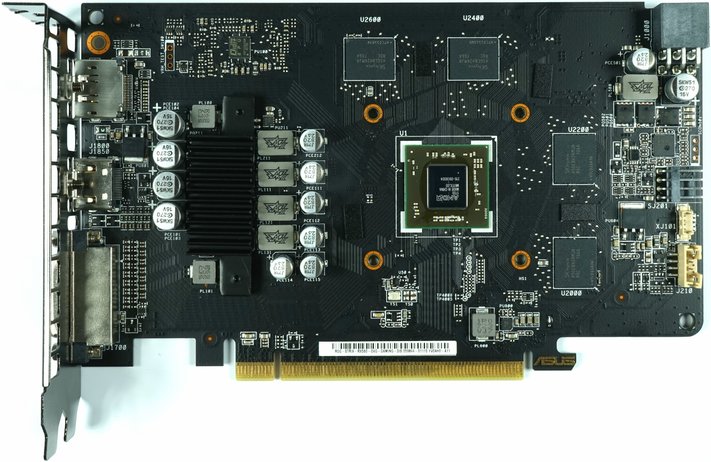
| Cooling system at a glance | |
|---|---|
| Type of cooler: | Air |
| Heatsink: | Aluminum |
| Cooling fins: | Aluminum block, continuous casting |
| Heatpipes | 2 ground-pressed heatpipes (DHT) |
| VRM cooling: | only via separate small heat sinks only MOSFETs are cooled |
| RAM cooling | none, indirectly via airflow from the fan |
| Fan: | 2x 7.5 cm fan modules 11 rotor blades semi-passive lyrised |
| Backplate | No |
The massive heat sink has wider slots so that the air flow from the two fans reaches the board, at least in parts. The two ground and pressed heatpipes should contribute to better (and faster) distribution of waste heat.
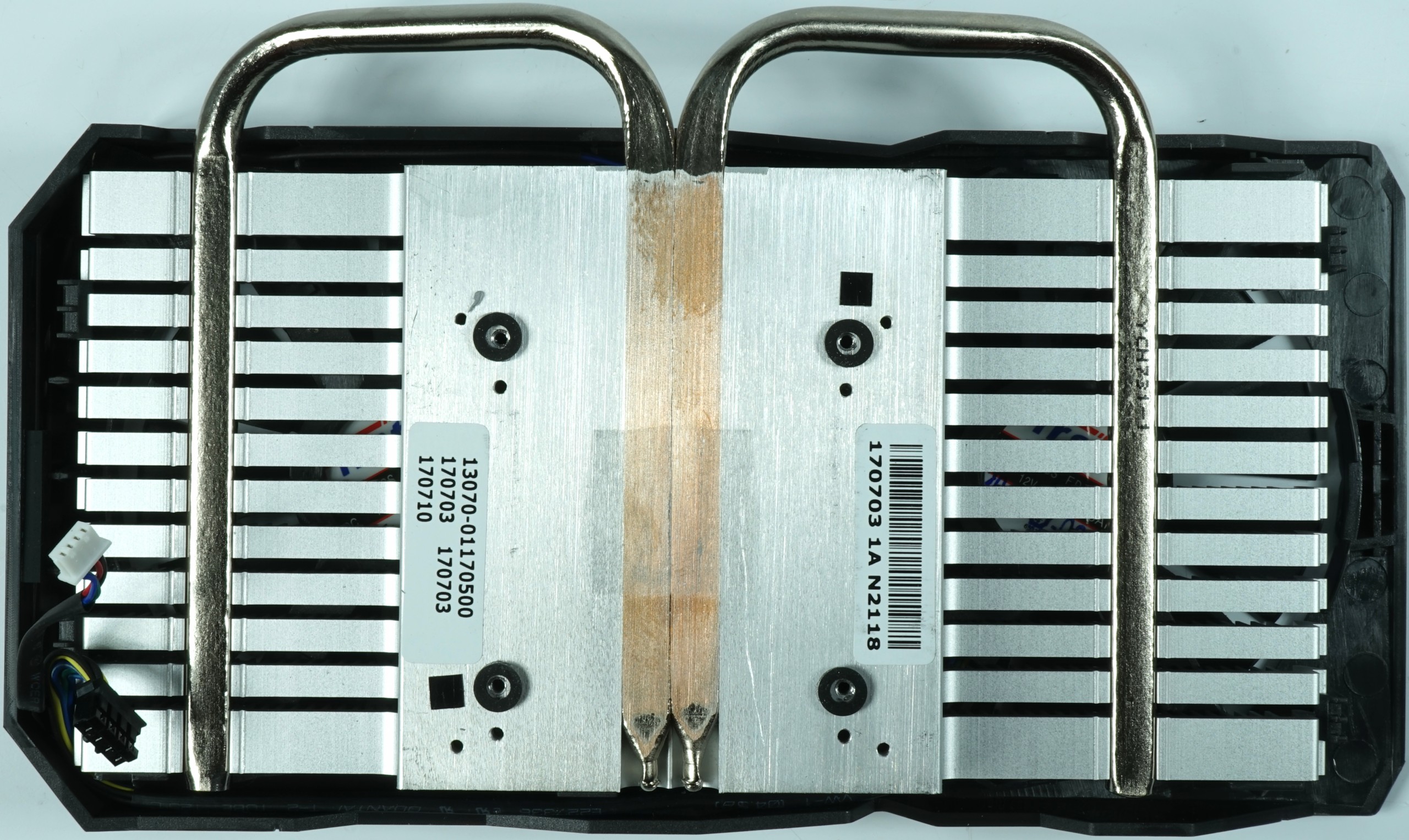
The already mentioned small VRM heat sink is just enough, but requires already manually higher fan speeds with the maximum OC in order to keep the VRM constant below 100°C.
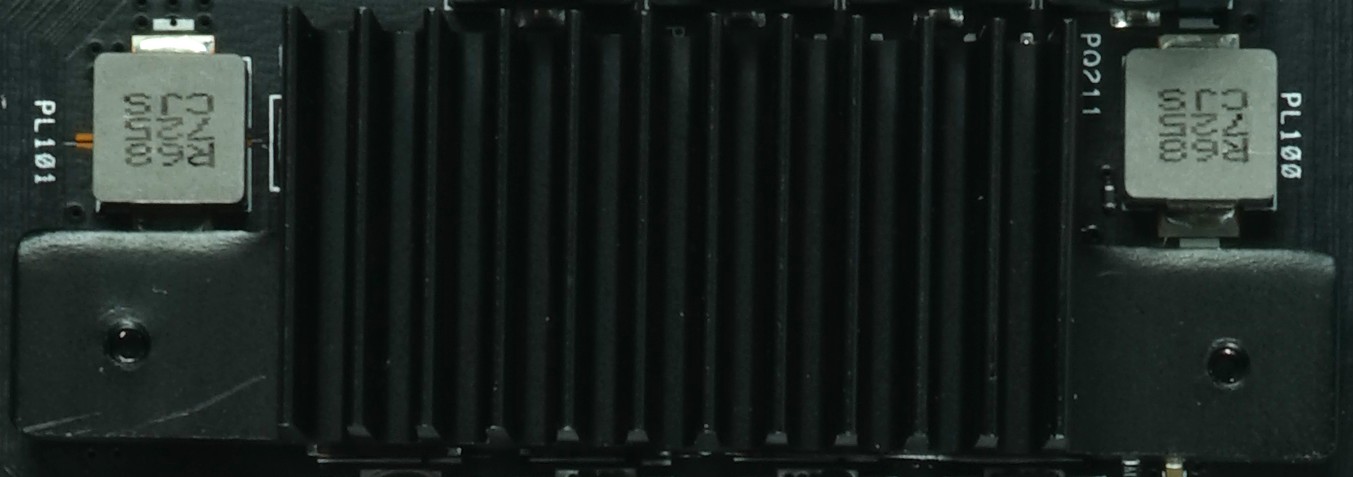
Fan curves and noise emission ("volume")
The fan curves indicate a rather conservative and volume-optimized control. Start pulses and hysteresis do not exist, the semi-passive mode is simply determined by the mechanical and electrical limits of the fans together with the corresponding voltage values for starting or starting. Stop the fans. Simple, but not very nice.
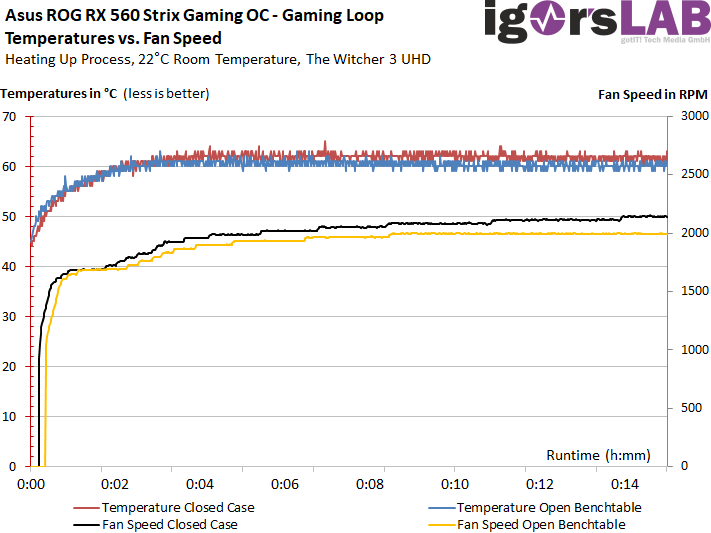
The whole thing does not look much different in the stress test, although due to the slightly higher power consumption the speeds are also slightly higher.
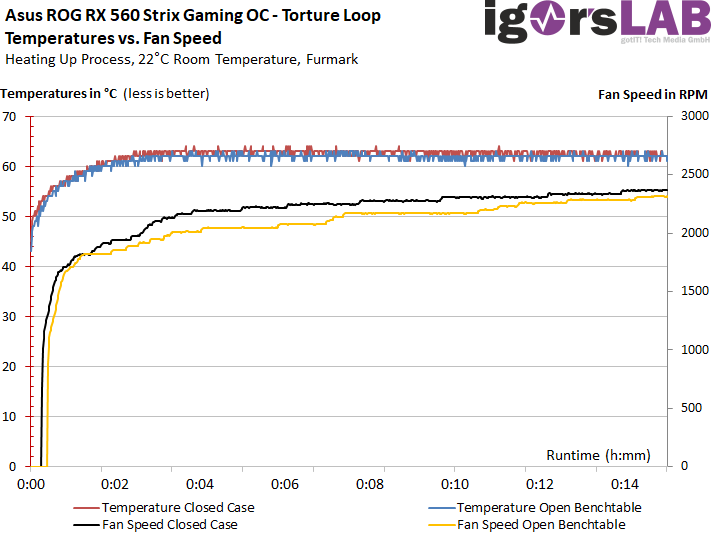
| Measurements for fans and noise emission |
|
|---|---|
| Fan speeds Open Benchtable Maximum |
2058 rpm |
| Fan speeds Open Benchtable Average |
2050 rpm |
| Fan Speeds Closed Case Maximum | 2222 rpm |
| Fan Speeds Closed Case Average | 2214 rpm |
| Noise emission (air) Maximum |
41.7 dB(A) |
| Noise Emission (Air) Average |
41.2 dB(A) |
| Noise Emission (Air) Idle | 0 dB(A) |
| Sound characteristic / Hearing impression |
hardly lower frequency bearing noises clearly audible engine noise< 1 Hz audible air/demolition noises |
To illustrate our subjective audio impression once again, we now have a high-resolution graphic with the complete frequency spectrum of our laboratory measurement:
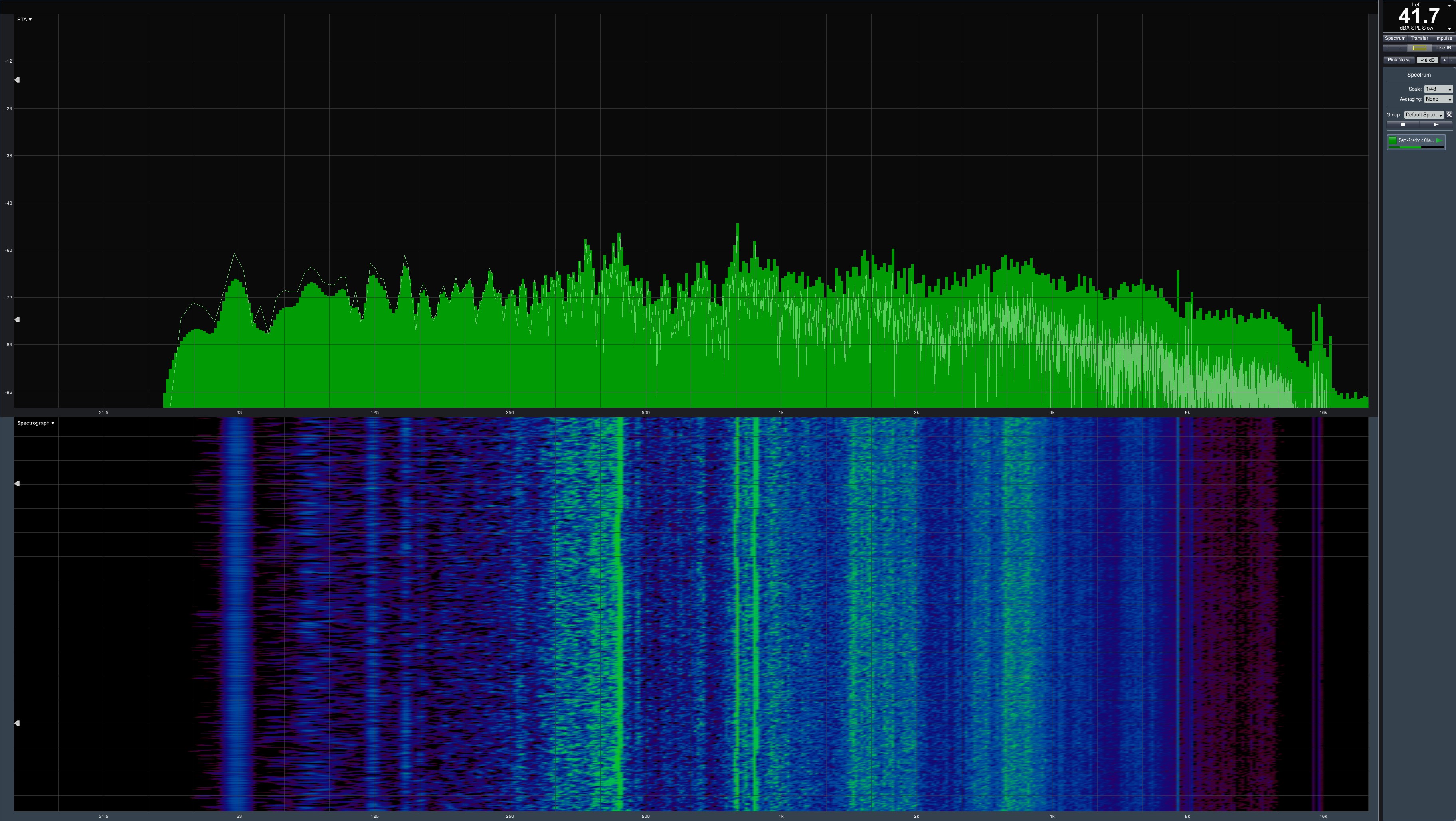
- 1 - Einführung und Übersicht
- 2 - Warhammer40.000: Dawn of War III
- 3 - Ashes of the Singularity: Escalation
- 4 - Battlefield 1
- 5 - Doom
- 6 - Ghost Recon Wildlands
- 7 - Hitman 2016
- 8 - Rise of the Tomb Raider
- 9 - The Witcher 3: Wild Hunt
- 10 - World of Warcraft
- 11 - Leistungsaufnahmevergleich
- 12 - RX 560: Platine und Spannungsversorgung
- 13 - RX 560: Temperaturen, Taktraten, OC und Wärmebildanalyse
- 14 - RX 560: Kühlerdetails und Geräuschentwicklung
- 15 - Zusammenfassung und Fazit































Kommentieren